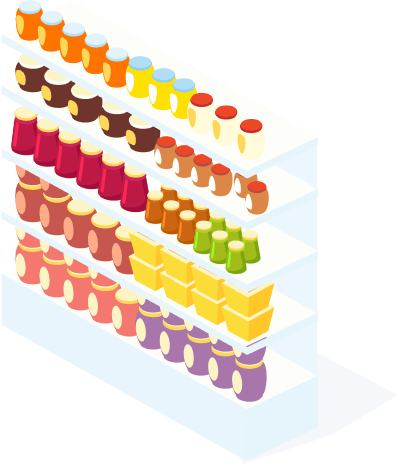E-commerce Simulator
Main features
- Test your products on any e-commerce retailer
- Quick to deploy and customise
- Creation of conjoint e-commerce tests
- Real-time data analytics

Key Insights
Packaging Impact
Packaging Impact
Identify which packaging designs and configurations are most effective at attracting and retaining customers and driving sales.
Channel Performance
Determine which packaging options perform best on different channels, such as social media, e-mail marketing, and mobile apps, and optimize the packaging strategy for each channel.
Customer Behavior
Gain insights into how customers interact with different packaging options, including which options generate the most interest, clicks, and purchases.
Target Audience Preferences
Understand the packaging preferences of different target audience segments, such as age, gender, location, or shopping behavior, and tailor the packaging strategy accordingly.
Brand Perception
Evaluate how different packaging options impact the brand perception of the target audience and ensure that the packaging strategy aligns with the brand identity and messaging.
Competitor Analysis
Monitor the packaging strategies of competitors and identify opportunities to differentiate the brand and gain a competitive advantage.
How does it work?
The E-commerce simulator is a powerful tool that can help brands optimise their packaging strategy and improve their online shopping experience. With features such as A/B testing, customisable landing pages, multi-channel integration, analytics dashboard, heatmaps, and feedback collection, the tool provides shopper insight directors with valuable data on how different packaging options perform across various channels and target audience segments.
By using the E-commerce simulator to test packaging variables before rolling them out to their actual online store, brands can reduce the risk of costly mistakes and improve their chances of success. Overall, the E-commerce simulator is an indispensable tool for any brand looking to maximize its online sales and enhance the overall customer experience.
Level-up your market research with our solutions
3D Virtual Shelves
Simulate in-store experience to test your product packaging, pricing, and shelf layout.
Augmented Reality Shelves
Blend real world 360 photos with 3D interactive shelves
Portable Digital Shopper Lab
Display an interactive virtual store on a life-sized projector screen.
3D Virtual Shelves
Simulate in-store experience to test your product packaging, pricing, and shelf layout.
Portable Digital Shopper Lab
Display an interactive virtual store on a life-sized projector screen.
Augmented Reality Shelves
Blend real world 360 photos with 3D interactive shelves
Get started with your personalised demo
Learn how you can use ConceptSauce’s 3D virtual store platform and insights capabilites.
Or alternatively,
send us a message
and we’ll get back to you as soon as possible